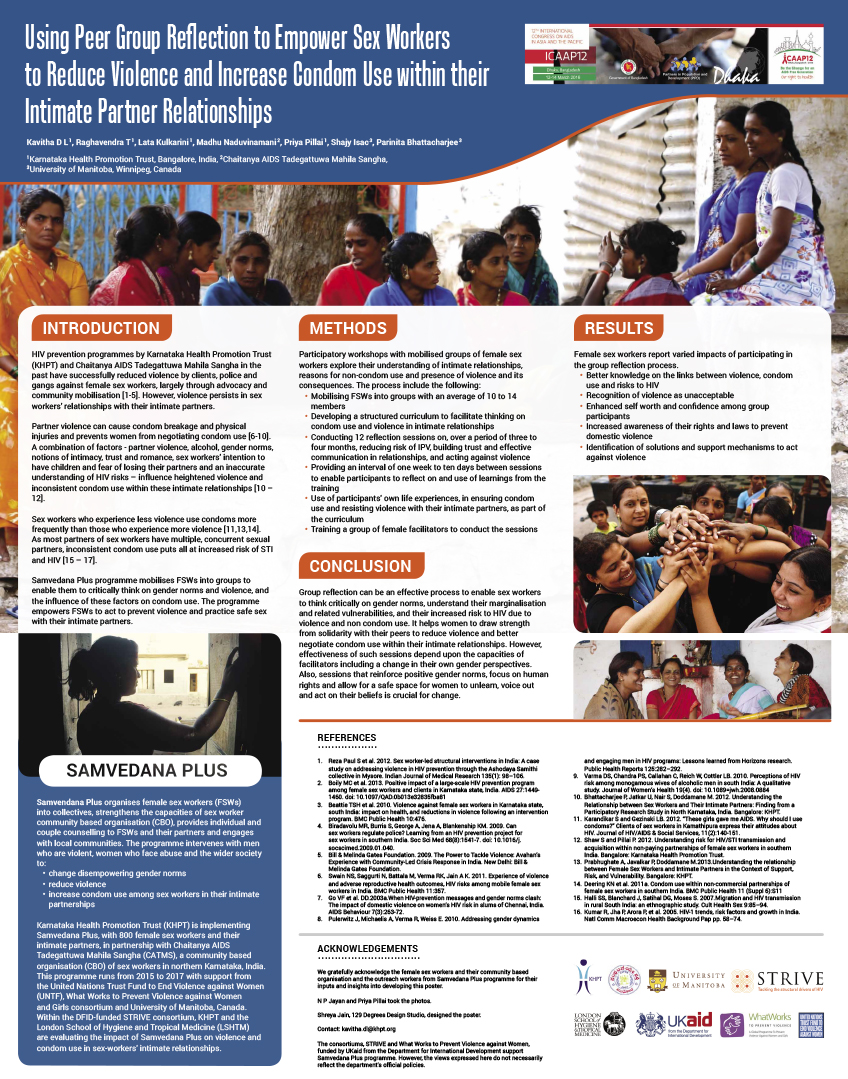Intimate partner violence (IPV) causes suffering, disempowers women, promotes male dominance, breaks national laws and is associated with increased HIV risk. A great many stakeholders stand to gain from evidence on how to reduce IPV effectively.
Maisha: Microfinance and gender training to reduce violence against women
Available in English and Swahili, this brochure outlines Maisha, an intervention study to reduce intimate partner violence and HIV risk.
Reducing intimate partner violence against female sex workers: findings from the Samvedana Plus baseline study
Samvedana Plus is an intervention and evaluation study designed to understand and address violence and HIV risk in female sex workers' relationships with their intimate partners.
What do we (really) know about VAW and HIV risk? - Lori Heise
What is known about the epidemiological pathways linking violence against women and girls (VAWG) and HIV? And what are the implications for intervention?
With support from WHO, UNICEF, UNAIDS and the Greentree Foundation, STRIVE convened a high-level meeting of experts from both the violence and HIV fields to:
How does VAW affect HIV risk? Launching Greentree II
Lori Heise gave the following presentation at the launch of the Greentree II report, held at the London School School of Hygiene & Tropical Medicine on Friday 25 November 2016. It was the first in a series of seminars organised by the Gender, Vi
Social norms talking points
Donors and practitioners are increasingly interested in harnessing insights from social norms theory to catalyse change around gender inequity and harmful gender related practices. However, little guidance is available to help practitioners integrate simple norms measures and change strategies within field-based programming.
To address this gap the Gender, Violence and Health Centre at the London School of Hygiene & Tropical Medicine has launched a learning and reflection group on social norms and gender-based violence.
The group mission is:
Client-perpetrated and husband-perpetrated violence among female sex workers in Andhra Pradesh, India: HIV/STI risk across personal and work contexts
This study examines personal and work based violence and its relation to HIV risk factors among female sex workers in Andrha Pradesh, India.
To varying degrees women who experienced client or husband violence were:
Reducing intimate partner violence and increasing condom usage in the HIV/STI response: a facilitator's guide for training intimate partners of female sex workers
Research studies have shown a significant link between non condom use, HIV and gender-based violence.
Reducing intimate partner violence and increasing condom usage in the HIV/STI response: a facilitator's guide for training female sex workers
Research has shown a significant link between non-use of condoms, HIV and gender-based violence. Sex workers’ ability to negotiate condom use with intimate partners (IPs) is severely compromised by several factors that include their emotional and sometimes financial dependence on the partners, inequitable power relationships with their IPs, violence in their intimate relationships, social norms defining their acceptable behaviour and expectations around fidelity. These factors increase their vulnerability to HIV.
This guide is written to help facilitators cum counsellors to:




